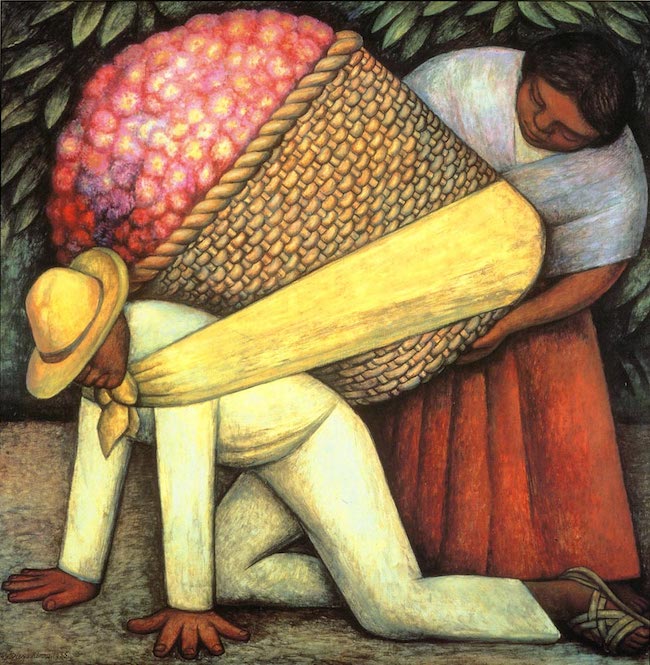. . . beginning in 1984, many of the men there were recruited by a California flower-grower who needed workers for his farm, in Somis, an hour north of Los Angeles. The Zapotecs were taken by train to Tijuana and smuggled to Somis, and there they were enslaved: held in a compound in perpetual debt, frightened into submission by warnings about the Border Patrol, and forced to work sixteen hours a day. Some of the men eventually sought help. In 1990, a federal grand jury in Los Angeles indicted the grower on charges of slavery.
William Langewiesche, speaking of Zapotecs from the mountain village of Santa Ana Yareni, Mexico, in “Invisible Men,” The New Yorker, February 23, 1998. More on the story and trial here. Some of the workers fled to a ravine in San Diego County where they became squatters, illegally, out of sight, hence the title.
I taught the essay to my comp classes in Silicon Valley over the years, telling students how it reminded me of and added insight to Diego Rivera’s painting The Flower Carrier, 1935, above. We saw afresh the burden. Recent events bring further illumination, more colors and contrasts.
Really, it is gorgeous what is being envisioned now in this country, simple and direct in its formal symmetry, bright in its assumptions, beautiful and impossibly light in its composition, in its solution to the tensions it proposes to ease.
There are all kinds of walls and all kinds of invisible men. We’ll want to follow not only what the proposed wall to the south will keep out, but also what it will contain and allow to blossom. So much that has been hidden behind walls will be revealed; other invisible men will come to light.
